Child custody schedules by age in Australia: 7 top scenarios to try
Joint custody. Sole custody. Shared custody.
These are all terms you may have heard bandied about from time to time. But until you’ve been in the position of having to negotiate a child custody arrangement, they’re likely just words.
While joint custody and shared custody tend to be used when two separated or divorced parents share the care of their children, and sole custody is when one parent alone cares for the children – there’s actually no single way that custody arrangements are set out.
Instead, the ‘schedule’ for custody arrangements – that is the way that time is divided between co-parents – will be based around your family’s unique needs. And it will aim to disrupt your children’s lives as little as possible.
One great way to meet both these aims is to arrange child custody schedules by age. This will allow you to take into account the needs of your children now. But it will also give you the flexibility to change those custody arrangements as your children get older and their needs change. So if you’re wondering what the best custody schedule is for a five-year-old, a teenager, or a baby, we’ve suggested some developmentally-appropriate custody schedules below.
Why is it important to define a child custody schedule with the other parent?

Sometimes divorcing parents may not want to bother with what can seem like an overly formal childcare arrangement. But even if you’re amicably splitting, it’s important to define a clear child custody schedule with the other parent.
1. Set pre-determined boundaries.
Your child custody arrangement will help you set pre-determined boundaries for your entire family. It establishes the responsibilities of – and time spent with – each parent. Even more, it gives your children clarity about where they will be spending their time and when they will be seeing each of you.
2. Avoid unnecessary future heartache and anguish.
Your child custody arrangement also lets you avoid heartache or anguish in the future, particularly when the unexpected comes up. While you may be amicable now – there’s no guarantee that your relationship will remain that way. And there could be situations that come up that you might not be able to resolve without formal arrangements. For example, you may never have considered family deaths, holidays, illnesses, or even pandemic lockdowns which could cause arguments without your formal arrangements.
3. Keep the best interests of the child first.
But most importantly, having a formal child custody agreement and schedule in place helps keep the best interests of the child first. There will be fewer arguments and less fighting between you both. And that means you’ll be able to focus on making the best decisions for the kids.
How to create a child custody schedule that works for you both
When creating a child custody plan that works for both of you, you need to take into account your children’s needs first and foremost. But also your own needs and lifestyle, as well as that of your ex-partner. A great parenting plan will consider:
- What your child wants and needs, including where they want to live
- Where the child will primarily reside
- The amount of time each parent will spend with a child and the schedule of that time
- Your working schedules
- Your child’s educational and extracurricular schedule
- When and how changeovers will occur
- How and when you can communicate with your child when they are not in your physical care
- How special occasions will be handled (birthday, Father’s Day, weddings, etc)
- How school holidays will be managed
- What happens in the event of an illness or a death in the family
- How to ensure time with extended family, such as grandparents
- How you will make big decisions (for example, education, medical care or religious practice)
- The methods for communication between you and your co-parent, and when communication should be expected
- The management of the child’s finances (for example, child support, savings accounts payments, extracurricular activity costs) including method for repayment between parents
- A plan for important decisions that must be made in an emergency
Get the support you need. Schedule a call back from our caring team today.
Child custody schedules by age in Australia
It’s also really important to consider the age of your children when you’re putting together your parental agreement. Why? Because your child will have different needs at different ages. Of course, there are no set rules for how child custody schedules by age in Australia should be managed, but there are some common custody arrangements and scenarios.
Of course, there may be additional elements that are important to your family and you’ll want to be sure to include those. Your parenting schedule will dictate your family’s new routine, so you must find one that works for your family and that you can all stick to.
Ages 0-1 years old
This can be a difficult age for custody arrangements because it’s an important bonding time for parents and babies. Babies need to spend quality time with both parents and shouldn’t be separated from one parent for more than a few days at a time. Plus too much upheaval can upset a baby’s schedule, making it hard for them to settle each time there’s a change – and that’s difficult for everyone.
Often the best result is to have the child live with one parent full time, but with frequent and consistent daytime visits from the other parent. This will likely last through the age of one – or until your child is settling well in new environments. Then you can revisit the best approach for the new age.
Ages 1-3 years old
When your child is a toddler – around the ages of one and two – they will be able to start spending nights with the non-primary caregiving parent. At this age, they’re a bit more adaptable, and splitting time between parents is more doable.
But it is important to have a consistent parenting schedule. Your child needs to know when they’ll see you and when they’ll see their other parent, even if the schedule is not set in stone.
Sample child custody schedule: 2-2-3 rotation
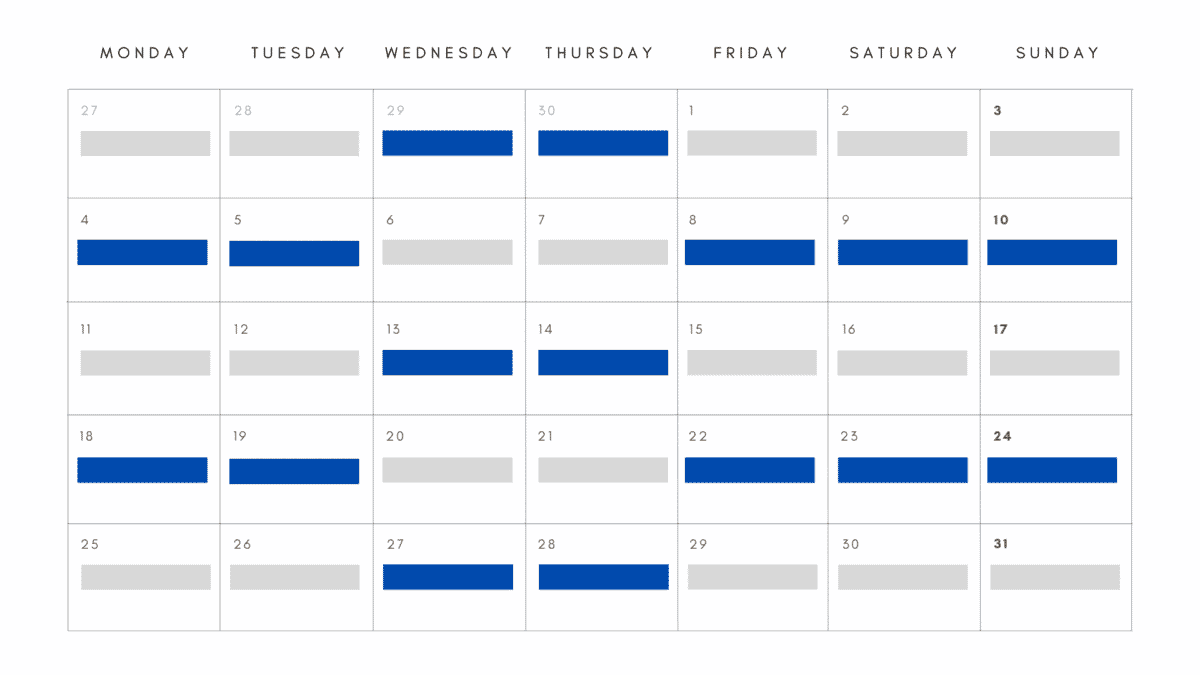
School-age children – Ages 4-11 years old
When children reach school age, their custody arrangements can be more flexible. They’re more emotionally developed and adaptable and will likely be able to understand and handle a slightly longer separation from parents better.
At this stage, you should consider what your children need, but also what your own lifestyle needs are. For example, if you work weekends, perhaps you can have your children more frequently during the week.
Sample Custody Schedule: 3-3-4-4 Rotation
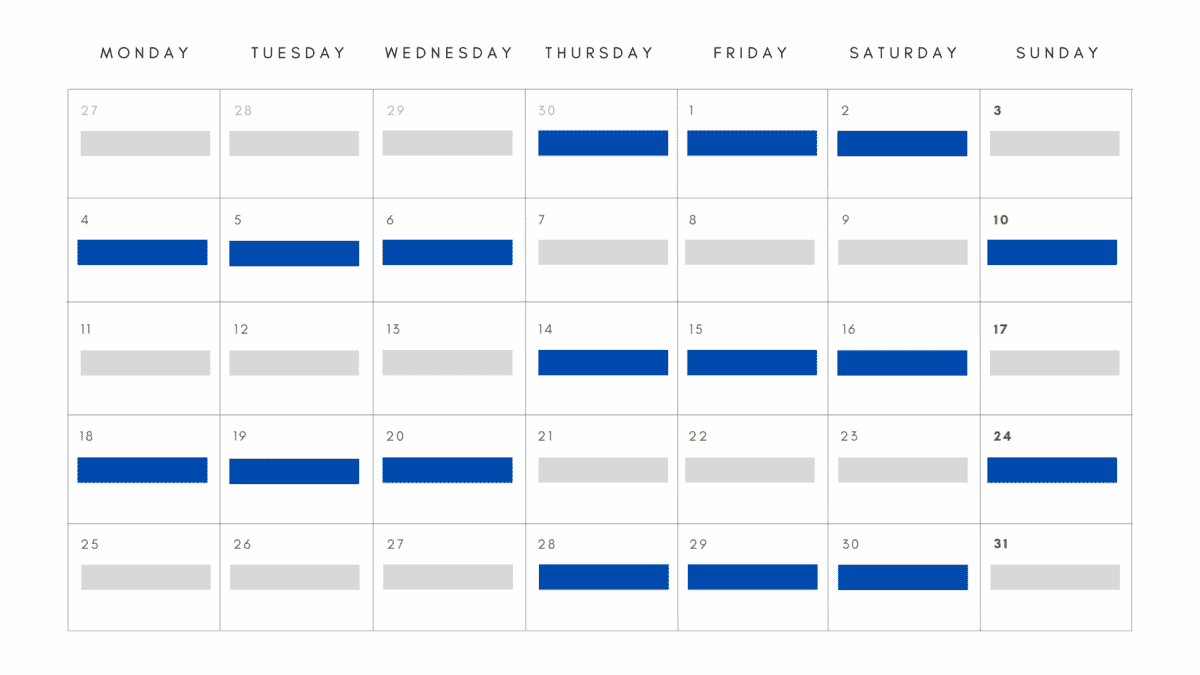
Teenage children – Ages 12-17 years old
In the teen years, your children are ready for more space. They may start to spend more time with friends. They will have more school commitments and perhaps sports, music or other extracurriculars will take more time. And they may even get a job.
Any custody arrangement at this age will need to take into account your teen’s schedule and preferences. It’s best to speak to them directly about what they need and want before finalising your custodial schedule for this age bracket.
Sample custody schedule: Alternative weeks
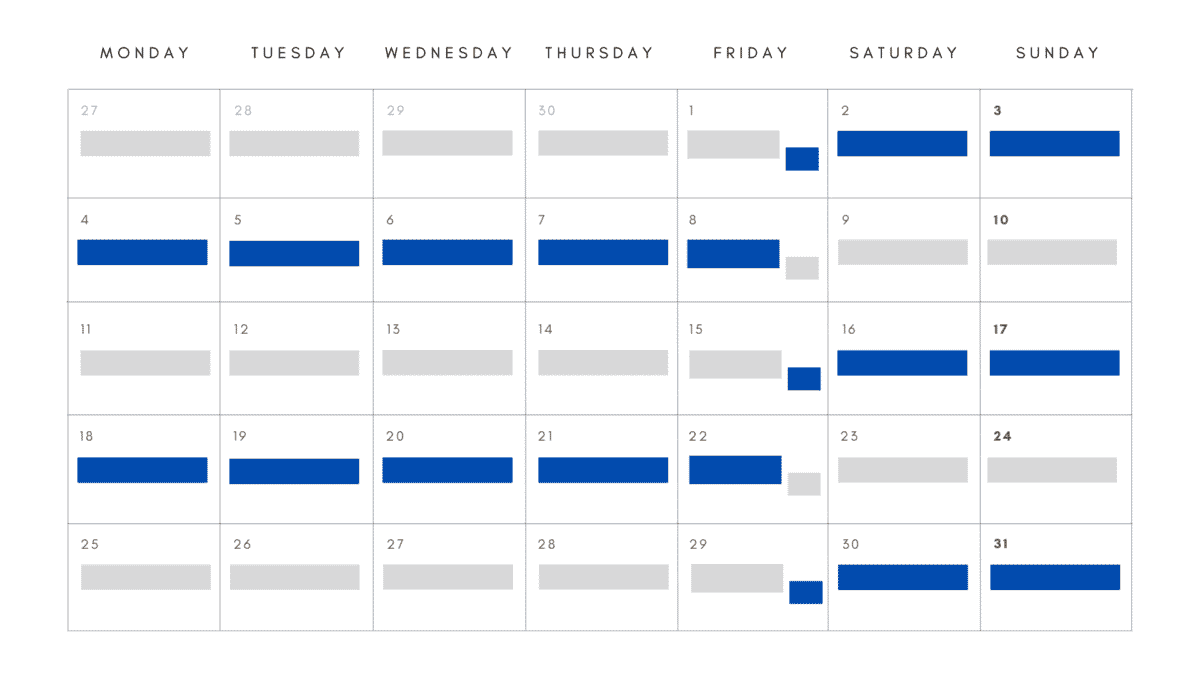
Other common child custody schedules
One week on, one week off, with a mid-week visit or overnight
This schedule works well for older children who are able to spend a longer time away from one parent. However, many families like to add the mid-week visit or even a mid-week overnighter, as well. Often this will be the non-custodial parent taking the child to an extracurricular activity – such as rugby practice or swimming. Or keeping them for a mid-week night and then dropping them round to school the next day.
It’s a nice way to create a stable schedule but allow the parents a bit more contact.
Sample custody schedule: Alternative weeks with a mid-week visit
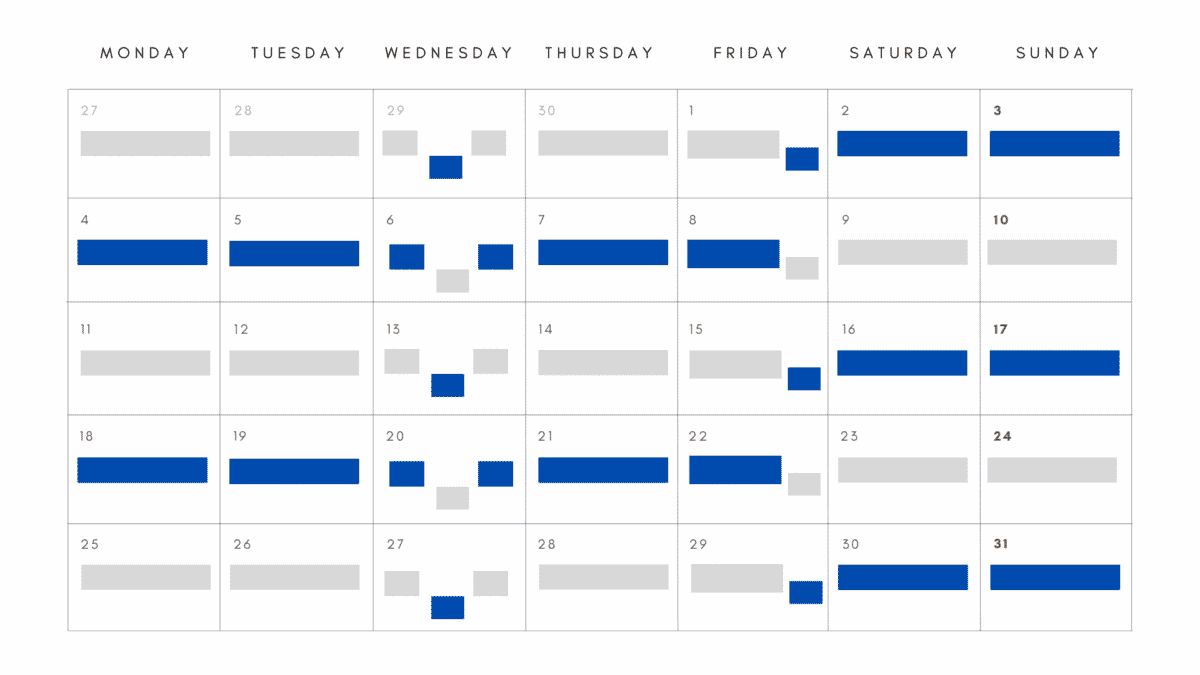
Sample custody schedule: Alternative weeks with a mid-week stay
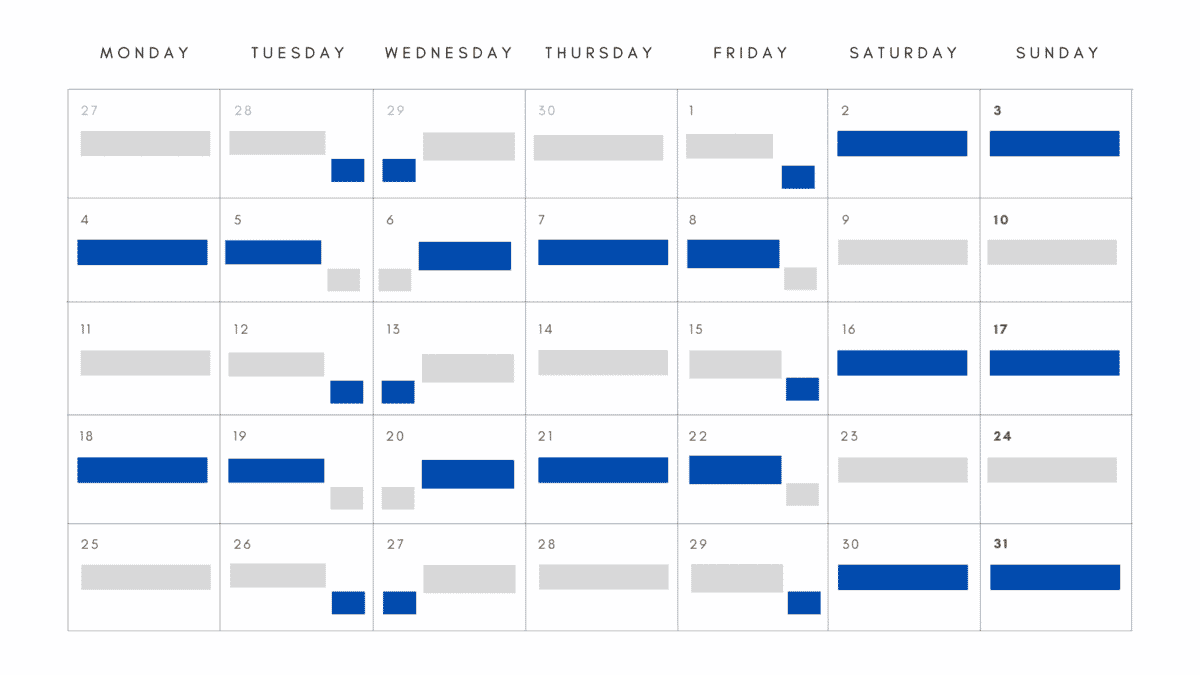
2-2-5-5 schedule
This schedule is similar to 3-3-4-4 but your kids would be with you for two days, their other parent for two days, and then you for five days followed by the other parent for five days. This arrangement allows your kids to spend set days at each home – so, for example, every Sunday and Monday will be at your house – and then fluctuate a few days too.
If you need any legal advice on child custody schedules by age in Australia, we can help.
Shared custody comes in many forms

Shared custody can come in many different forms. And your family remains uniquely yours even after divorce or separation. Creating your own age-appropriate schedule that works for your children and your family will help you navigate shared custody with flying colours. And for most parents, despite the situation, that is the most important thing.
Australian Family Lawyers are expert family lawyers who can help you navigate your child custody dispute and arrangements with sensitivity and skill. If you need some help creating a child custody schedules by age in Australia, that works for your family, get in touch via the form below.
Do you have a question about family law or relationship law?
Call now 03 9088 3184
If you would prefer an Australian Family Lawyers team member to contact you, complete the form below.



